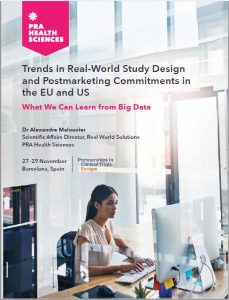 When a new medicine is approved, there is under a 25% chance that the United States Food and Drug Administration (FDA) or the European Medicines Agency (EMA) will impose, as part of conditional approval, studies conducted to satisfy postmarketing requirements. US regulations governing such studies are found in the 2011 guidance document regarding
When a new medicine is approved, there is under a 25% chance that the United States Food and Drug Administration (FDA) or the European Medicines Agency (EMA) will impose, as part of conditional approval, studies conducted to satisfy postmarketing requirements. US regulations governing such studies are found in the 2011 guidance document regarding
“Postmarketing Studies and Clinical Trials — Implementation of Section 505(o)(3) of the Federal Food, Drug, and Cosmetic Act (1).” EMA regulations are found in the 2017 “Guideline on Good Pharmacovigilance Practices (GVP) Module V — Risk Management Systems (Rev 2)” (2). On top of possible in vitro laboratory safety studies, safety studies in animals, and meta-analyses of previously published data, regulatory bodies can request execution of different studies in humans. In some cases, especially when scarce data are submitted for marketing approval, such studies can take the form of randomized clinical trials. More often, the studies are observational, prospective pharmacoepidemiologic ones such as drug registries, postauthorization safety studies (PASSs), and postauthorization efficacy studies (PAESs). They also may be retrospective in nature (e.g., for a drug utilization study, or DUS).
The FDA specifically distinguishes requirements from commitments. The term postmarketing requirement (PMR) describes all required postmarketing studies and clinical trials, including those required under the Food and Drug Administration Amendments Act (FDAAA) and those required under subpart H of 21 CFR part 314, subpart E of 21 CFR part 601, the Pediatric Research Equity Act, and the Animal Efficacy Rule. The term postmarketing commitment (PMC) describes studies and clinical trials that applicants have agreed to conduct but that generally will not be meet the statutory purposes in 505(o)(3)(B) — and so will not be required.
PRA has been thinking about ways to predict the chances that anew medicine will face postmarketing requirements. An interdisciplinary collaboration investigated what could be learned using artificial intelligence (AI). The findings and applications to innovator companies are discussed in this special report.
Just fill out the form below to download and read this special report now.
